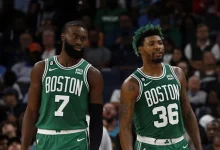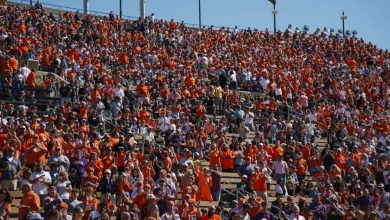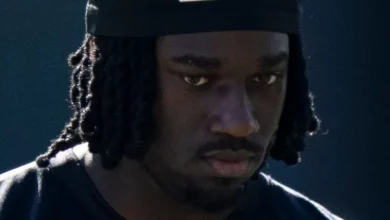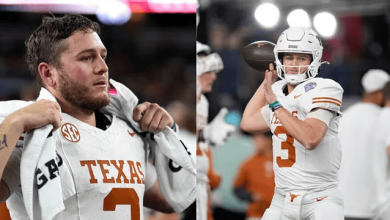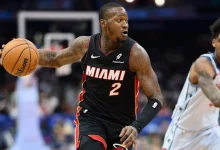To stay competitive, the Baltimore Ravens need to address a crucial position.
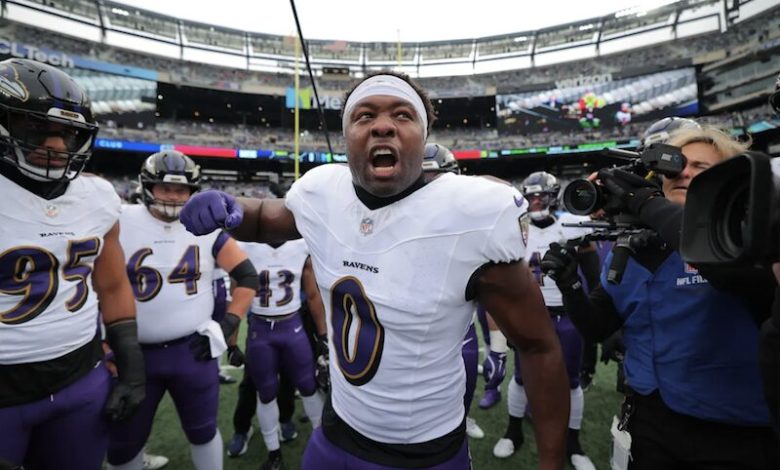
To Stay Competitive, the Baltimore Ravens Need to Address a Crucial Position: The Wide Receiver Spot
As one of the more successful teams in the AFC over the past few seasons, the Baltimore Ravens have consistently been competitive in one of the toughest divisions in the NFL. With a strong foundation on both sides of the ball, including an aggressive defense led by standout players like Marlon Humphrey and Calais Campbell, the Ravens have often been among the playoff contenders. However, despite the team’s physical, hard-nosed brand of football, there is one glaring weakness that continues to hinder the Ravens’ ability to make a deep run in the playoffs: the wide receiver position.
Historically, the Ravens have had a spotty track record when it comes to drafting or acquiring elite wide receivers. While Lamar Jackson has been a dynamic, MVP-caliber quarterback, his effectiveness has been limited at times due to a lack of high-end, game-changing wideouts. As the NFL continues to evolve into a more pass-heavy league, it has become increasingly evident that the Ravens must address their receiver corps if they are to remain competitive and truly contend for another Super Bowl title.
This article will explore why the wide receiver position is such a crucial area of concern for the Ravens, how it impacts the team’s offensive success, and what steps the Ravens need to take to improve their receiving group moving forward. From addressing key player acquisitions to exploring potential draft targets, the Ravens’ ability to improve their wide receiver group could determine whether they stay competitive in the coming seasons or fall behind in a rapidly evolving NFL landscape.
The Ravens’ Offense: Lamar Jackson’s Dual Threat
Before delving into the issues with the Ravens’ wide receiver corps, it’s important to understand the strengths and weaknesses of their offensive system, which has been centered around Lamar Jackson since he took over as the starting quarterback in 2018. Jackson, who won NFL MVP honors in 2019, is one of the most electrifying quarterbacks in NFL history. His unique combination of speed, agility, and arm strength allows him to make plays both with his legs and through the air, creating a multifaceted offense that is difficult to defend.
While Jackson’s running ability has opened up a whole new dimension for the Ravens’ offense, it has also placed a significant amount of pressure on the team’s wide receivers to make plays when the ball is in the air. Jackson’s ability to throw deep balls or extend plays with his legs allows for opportunities, but his passing game has been hampered by a lack of consistent playmaking receivers.
Since Jackson became the starter, the Ravens have frequently relied on their rushing attack to control the clock and dictate tempo. Running backs like J.K. Dobbins and Gus Edwards, along with Jackson himself, have created one of the most dominant ground games in the league. While the Ravens have had success on the ground, their passing attack has often struggled to keep up, particularly in high-stakes games where elite quarterbacks and offenses can take advantage of defensive weaknesses.
Jackson’s struggles as a passer have been partly due to his wide receivers not consistently winning one-on-one matchups, failing to create separation, or dropping passes at critical moments. Even with the threat of Jackson’s mobility, opposing defenses have been able to focus on the Ravens’ lackluster wide receiving group, knowing they can limit the passing game without being punished down the field.
The Lack of a True No. 1 Receiver
One of the primary issues with the Ravens’ receiving corps is the absence of a true No. 1 wide receiver. Over the years, the team has had a few solid receivers, such as Steve Smith Sr., Anquan Boldin, and Mike Wallace, but they have not had a consistent, elite option at the position since those players left. This lack of a No. 1 receiver has forced the Ravens to rely on a collection of complementary players who, while talented, have not been able to consistently create big plays on a game-to-game basis.
Marquise “Hollywood” Brown, who was drafted in the first round of the 2019 NFL Draft, showed promise as a deep threat during his early years with the team. However, his time with the Ravens was marred by inconsistency. Brown struggled with injuries and was unable to develop into the top-tier receiver the Ravens had hoped for. In 2022, Brown was traded to the Arizona Cardinals, further highlighting the team’s inability to maintain an elite wide receiver talent.
Since Brown’s departure, the Ravens have been left with a group of receivers who don’t quite have the same explosive potential. Rashod Bateman, the Ravens’ 2021 first-round pick, has shown flashes of potential but has been hampered by injuries. Bateman has yet to emerge as the go-to, reliable receiver that the Ravens need. Devin Duvernay, while a solid player, is more of a complementary piece than a game-changer. Players like James Proche and Tylan Wallace have struggled to make a consistent impact, leaving the Ravens without a true standout at the position.
This absence of a clear-cut No. 1 receiver has placed a tremendous burden on Lamar Jackson to elevate the play of his receivers. While Jackson is undoubtedly talented, it’s unreasonable to expect him to carry the passing game with such limited support. The lack of a game-changing wideout has ultimately capped the potential of the offense, particularly when facing high-caliber defenses in the playoffs.
The Importance of the Wide Receiver Position in Today’s NFL
In the modern NFL, the wide receiver position has become one of the most critical areas of focus for any team that hopes to compete for a Super Bowl. With the rise of high-powered offenses led by quarterbacks like Patrick Mahomes, Aaron Rodgers, Joe Burrow, and Josh Allen, the need for elite receiving talent has never been more apparent. Teams with strong quarterback-play and dynamic receiving corps have been able to consistently dominate on offense and put pressure on defenses to keep up.
For the Ravens, this shift in the league’s offensive landscape has made it clear that their offense must evolve. While the Ravens’ running game and defense have been the backbone of their success, the lack of a potent passing attack has made them vulnerable in big games, especially against teams with strong quarterbacks. As the league continues to trend toward pass-heavy offenses, the Ravens will need to adapt by improving their passing game. The easiest and most impactful way to do so is by acquiring a top-tier wide receiver who can take the pressure off of Lamar Jackson and provide him with a legitimate weapon in the passing game.
How the Ravens Can Address the Wide Receiver Position
To stay competitive and continue their push for a Super Bowl, the Baltimore Ravens must address their wide receiver position in the near future. There are several avenues they can explore to improve their receiving corps:
1. NFL Draft
The 2025 NFL Draft is expected to feature a talented crop of wide receivers, and the Ravens will likely be active in selecting a high-impact playmaker. With their recent draft success, including selecting players like Rashod Bateman, the Ravens could look to target another dynamic receiver who can contribute immediately. Players such as Jaxon Smith-Njigba from Ohio State or Marvin Harrison Jr. from Indiana could provide the Ravens with the type of No. 1 receiver they desperately need.
2. Free Agency
In addition to the draft, the Ravens could explore the free-agent market for wide receivers. While there may not be a plethora of elite free-agent receivers available every year, signing a veteran wideout with a proven track record could immediately elevate the team’s passing game. DeAndre Hopkins, Odell Beckham Jr., or other veterans on the market could offer the Ravens a reliable, dynamic target for Jackson to lean on.
3. Trade Market
If the Ravens don’t find the right fit in the draft or free agency, they could explore trading for a proven wide receiver. Over the past few seasons, several teams have traded away high-profile receivers, and Baltimore could look to make a deal for a player like Keenan Allen from the Los Angeles Chargers or DJ Moore from the Chicago Bears. A trade would likely come with a significant price tag, but the Ravens could be willing to pull the trigger if it means improving their passing attack.
4. Develop Existing Talent
While acquiring a new wide receiver is a priority, the Ravens also need to focus on developing the young talent they already have. Rashod Bateman has shown flashes of brilliance, but his injury history has prevented him from reaching his full potential. If Bateman can stay healthy and continue to develop under the guidance of new wide receivers coach Keith Williams, he could become the No. 1 receiver the Ravens need. Additionally, players like Devin Duvernay and James Proche could step into larger roles if they continue to improve.

